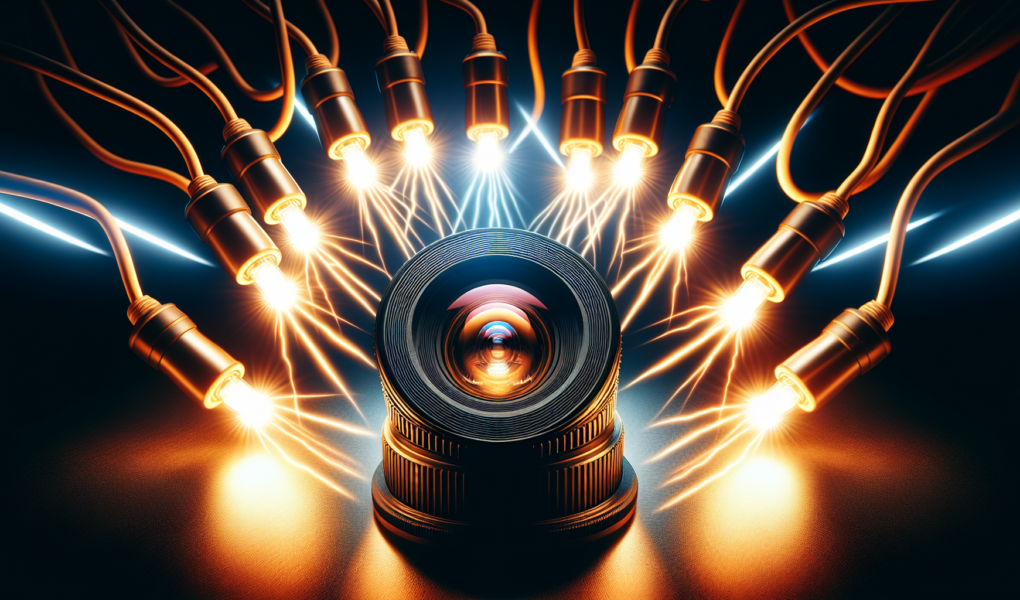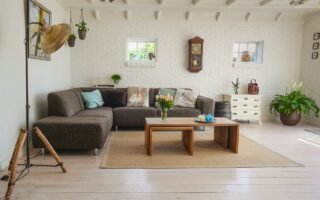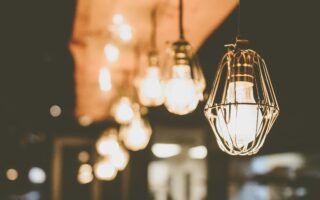Are you a budding photographer looking to enhance your skills in capturing the perfect shot? Look no further! This article offers a concise compilation of top lighting tips that will take your photography to the next level. Whether you’re a professional or just starting out, these tips will help you master the art of using light to create stunning and captivating photographs. So grab your camera and get ready to unlock the secrets of perfect lighting!
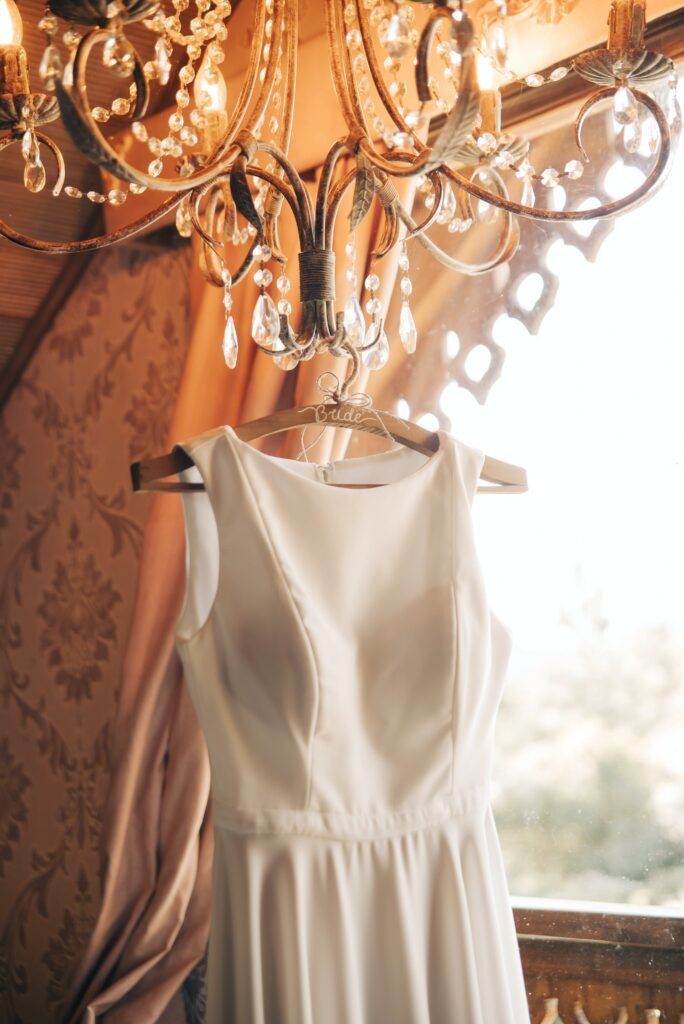
Understanding the Basics of Lighting
When it comes to photography, understanding the basics of lighting is crucial to capturing stunning images. Light plays a significant role in shaping the subject, setting the mood, and creating depth in photographs. There are two main categories of lighting: natural lighting and artificial lighting.
Natural Lighting vs. Artificial Lighting
Natural lighting refers to the illumination provided by the sun or other natural light sources. It is unpredictable but can result in beautiful photographs with soft, diffused light or dramatic shadows, depending on the time of day and weather conditions.
On the other hand, artificial lighting involves using artificial light sources such as camera flashes or continuous lighting to illuminate the scene. It provides photographers with more control over the lighting conditions and allows them to shape the light according to their vision.
Types of Artificial Lighting
Artificial lighting encompasses a variety of equipment and techniques that photographers can use to manipulate light. Some common types of artificial lighting include camera flash, continuous lighting, reflectors, softboxes, umbrellas, and lighting stands and mounts.
Camera flash, also known as a speedlight or strobe, is a versatile tool that can provide a burst of intense light to illuminate a subject. It is often used in low-light situations or to add a pop of light to enhance the details of a subject.
Continuous lighting, as the name suggests, provides a constant source of illumination. It can be in the form of tungsten or LED lights and is particularly useful for video recording or capturing images in a controlled environment.
Reflectors are essential tools used to bounce and redirect light. They come in various shapes and sizes and are often used to fill in shadows or create a more even distribution of light.
Softboxes are light modifiers that create soft, diffused light by enclosing a light source within a large, fabric-covered box. They are commonly used in portrait photography to achieve a flattering, even illumination on the subject’s face.
Umbrellas, similar to softboxes, are light modifiers that soften and spread light. They are versatile and budget-friendly options for creating diffused light.
Finally, lighting stands and mounts are essential for positioning and securing lighting equipment. They provide stability and flexibility in adjusting the height and angle of the lights to achieve the desired lighting effect.
Color Temperature and White Balance
Color temperature refers to the warmth or coolness of light, measured in Kelvin (K). Different light sources have varying color temperatures, ranging from warm yellowish tones to cool bluish tones. Understanding color temperature is important in achieving accurate white balance, which refers to the adjustment of colors in a photograph to ensure they appear natural and neutral.
To control color temperature, photographers can use color correction gels or adjust the white balance settings on their cameras. These techniques allow for the correction of color casts caused by different light sources to produce images with true-to-life colors.
Inverse Square Law
The inverse square law is a fundamental principle in lighting that states that the intensity of light decreases proportionally to the square of the distance from the source. Understanding this law is essential for photographers to control the exposure and falloff of light in their images.
By moving the light source closer to the subject, photographers can achieve stronger, more focused light. Conversely, moving the light source farther away creates a more diffused and softer light. This law also highlights the importance of positioning the light source at a precise distance to achieve the desired lighting effect.
Essential Lighting Equipment
To master lighting in photography, it’s crucial to have the right equipment in your arsenal. Here are some essential lighting tools that every photographer should consider:
Camera Flash
A camera flash, also known as a speedlight or strobe, is a compact and portable lighting device that can be attached to your camera or used off-camera. It provides a burst of intense light that helps illuminate the scene, particularly in low-light conditions. Camera flashes come in various sizes and power output levels, allowing photographers to control the intensity of light.
Continuous Lighting
Continuous lighting refers to using a constant light source to illuminate the scene. It can be in the form of tungsten lights, fluorescent lights, or LED lights. Unlike camera flashes that provide a brief burst of light, continuous lighting offers a consistent illumination that makes it ideal for video recording or situations where you need a constant light source.
Reflector
A reflector is a versatile and affordable lighting tool that helps redirect and bounce light onto the subject. It consists of a metallic or fabric-covered panel that reflects light, softening shadows and filling in areas with less light. Reflectors come in various shapes and sizes, and they often have different surfaces, including silver, gold, white, and black. Each surface produces a different effect on the light, allowing photographers to control the quality and direction of light.
Softbox
A softbox is a light modifier that creates soft, diffused light by enclosing a light source within a large, fabric-covered box. It helps minimize harsh shadows and produces even illumination on the subject’s face, making it popular in portrait photography. Softboxes come in various shapes and sizes, including rectangular, square, and octagonal, allowing photographers to achieve different lighting effects.
Umbrella
An umbrella is another versatile light modifier that softens and spreads light by reflecting it back onto the subject. It consists of a fabric panel stretched over a metal frame and attached to the light source. Umbrellas come in different types, such as shoot-through or reflective, and they offer a cost-effective and portable option for creating diffused light.
Lighting Stands and Mounts
Lighting stands and mounts are essential for positioning and securing your lighting equipment. They provide stability and flexibility in adjusting the height and angle of the lights to achieve the desired lighting effect. Sturdy lighting stands with adjustable features allow photographers to easily position their lights at different angles, ensuring proper lighting coverage.
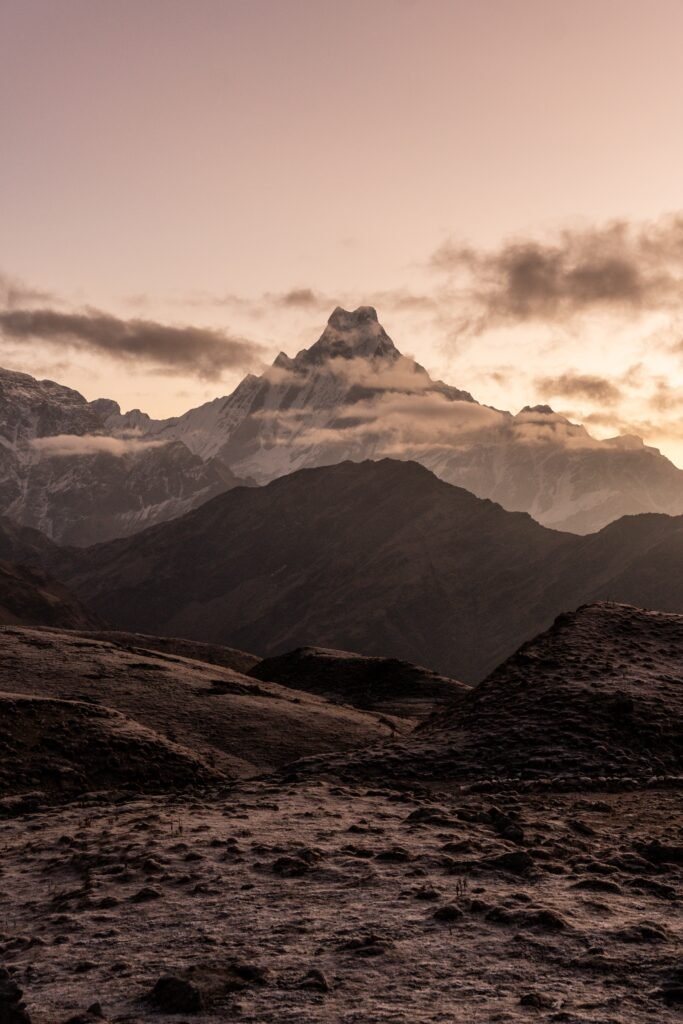
Mastering Composition with Lighting
Composition plays a crucial role in photography, and lighting is an essential component in creating visually appealing and impactful images. Understanding how the direction and angle of light can shape your subject is key to mastering composition with lighting.
Direction and Angle of Light
The direction and angle of light can dramatically affect the appearance of your subject. Front lighting, where the light source is positioned in front of the subject, provides even illumination and minimal shadows, resulting in a flat and two-dimensional look.
Backlighting, on the other hand, involves placing the light source behind the subject, creating a silhouette effect or adding a rim of light around the edges. This technique can produce dramatic and eye-catching images.
Side lighting, achieved by positioning the light source to the side of the subject, creates depth and texture by revealing the play of highlights and shadows. It can emphasize the contours and details of your subject, adding dimension to the image.
Top lighting, where the light source is positioned above the subject, can result in strong, harsh shadows cast downwards. This technique is often used to create dramatic or moody lighting effects, particularly in portrait photography.
Bottom lighting, also known as uplighting, involves placing the light source below the subject, casting shadows upwards. It can create a haunting or mysterious atmosphere and is often used in horror or dramatic genres.
Rembrandt Lighting
Rembrandt lighting is a classic lighting technique named after the famous Dutch painter who often used this lighting style in his portraits. It involves placing the light source at a 45-degree angle above and to one side of the subject, creating a triangular-shaped highlight on the cheek opposite the light source. This technique brings out the three-dimensionality of the subject’s face and adds a sense of depth and drama to the image.
Butterfly Lighting
Butterfly lighting, also known as paramount lighting, is commonly used in portrait photography to create a flattering and glamorous look. It involves positioning the light source directly in front and above the subject, casting a small butterfly-shaped shadow under the nose. This lighting style adds a sense of elegance and captures the subject’s features with soft, even illumination.
Split Lighting
Split lighting is a technique that involves placing the light source at a 90-degree angle to the subject, illuminating only one side of the face or object while leaving the other side in shadow. This technique creates a striking contrast between light and dark, emphasizing textures and adding a sense of mystery or drama to the image.
Rim Lighting
Rim lighting, also known as edge lighting or backlighting, involves placing the light source behind the subject to create a halo effect around the edges. It separates the subject from the background and adds depth and visual interest to the image. Rim lighting is particularly effective when photographing subjects with interesting or unique silhouettes.
Understanding Light Modifiers
Light modifiers are tools used to shape and control light, allowing photographers to achieve specific lighting effects. They can diffuse, bounce, or redirect light to create softer shadows, highlight details, or change the overall quality of the light. Here are some commonly used light modifiers:
Diffusers
Diffusers are translucent materials placed in front of a light source to soften and spread the light. They reduce the intensity of harsh shadows and create a more even and diffused illumination on the subject. Diffusers are often used with softboxes or umbrellas to achieve a soft, flattering light.
Reflectors
Reflectors bounce and redirect light onto the subject. They come in various shapes and sizes, with different surface colors such as silver, gold, white, and black. Silver reflectors produce a bright and specular reflection, while gold reflectors add warmth to the light. White reflectors create a neutral and soft fill light, while black reflectors absorb light and help create shadows.
Bounce Cards
Bounce cards are small reflective panels that photographers can use to bounce light back onto the subject. They are often small and portable, making them ideal for on-the-go photography. Bounce cards are useful for filling in shadows or adding catchlights to the subject’s eyes.
Gels
Gels are colored filters that can be placed in front of a light source to alter the color of the light. They allow photographers to create different moods, correct color casts, or add creative effects to the image. Gels come in various colors and densities, allowing for endless possibilities in lighting customization.
Snoots
A snoot is a narrow tube or cone-shaped device that limits the spread of light, creating a concentrated beam. It directs the light to a specific area or subject, adding emphasis and creating dramatic highlights and shadows. Snoots are often used in fashion or product photography to add a spotlight effect.
Grids
Grids are similar to snoots but consist of a honeycomb-shaped structure that restricts the spread of light even more precisely. They create a focused beam of light that adds more control and directionality to the lighting. Grids are commonly used in portrait and still life photography to create a spotlight effect or to highlight specific details.
Flags
Flags, also known as cutters, are flat opaque panels used to block or shape light. They can be used to prevent light from spilling onto unwanted areas, control the direction of light, or create distinct shadows. Flags are versatile tools that offer photographers more control over their lighting setup.
Barn Doors
Barn doors are adjustable flaps attached to a lighting fixture that allow for precise control of the light spread. They can be adjusted to narrow or widen the beam of light, and they are often used in theater or studio lighting to create specific lighting effects.

Creating Depth and Shape with Lighting
Lighting can be used to create depth and shape in photographs, bringing subjects to life and adding visual interest. Here are some techniques for achieving depth and shape with lighting:
Three-Point Lighting
Three-point lighting is a classic lighting setup used in both photography and videography. It involves using three lights positioned at different angles to illuminate the subject. The key light is the main light source, providing the primary illumination on the subject. The fill light is placed on the opposite side of the key light to fill in shadows and reduce contrast. Finally, the backlight, also known as the hair light or rim light, is positioned behind the subject to separate it from the background and add depth.
High-Key Lighting
High-key lighting is a technique that involves using bright, even illumination to create a light and airy atmosphere. It is characterized by the absence of harsh shadows and a predominance of light tones. High-key lighting is commonly used in fashion, beauty, or product photography to convey a sense of freshness, cleanliness, or ethereality.
Low-Key Lighting
Low-key lighting, in contrast to high-key lighting, utilizes dark tones and deep shadows to create a moodier and more dramatic effect. It selectively illuminates the subject while covering most of the scene in shadow. Low-key lighting is often used in genres such as film noir, horror, or dramatic portrait photography to evoke a sense of mystery, tension, or intensity.
Rembrandt Triangle
The Rembrandt triangle is a lighting technique named after the famous painter who often used this lighting style in his portraits. It involves positioning the key light at a 45-degree angle above and to one side of the subject, creating a small triangular-shaped highlight on the cheek opposite the light source. This technique adds depth and dimension to the subject’s face, creating a classic and captivating look.
Loop Lighting
Loop lighting is a technique that uses a light source positioned at a 30-45 degree angle above and to one side of the subject. It casts a small loop-shaped shadow slightly below the subject’s nose onto the cheeks. Loop lighting is one of the most flattering lighting setups for portraits, as it adds depth, definition, and a three-dimensional look to the face.
Split Lighting
Split lighting refers to illuminating only one side of the subject’s face while leaving the other side in shadow. It creates a striking contrast between light and dark areas, emphasizing textures and adding a sense of mystery or drama to the image. Split lighting is often used in genres such as portraiture or still life photography to create visually impactful and visually interesting compositions.
Broad Lighting
Broad lighting involves positioning the subject with the side of the face turned towards the camera, and the light illuminates the larger portion of the face. It creates a wider illuminated area and may leave the side turned away from the camera in shadow. Broad lighting can make the subject appear more robust and is often used to add a sense of dimension and shape to the subject.
Short Lighting
Short lighting is the opposite of broad lighting. It involves positioning the subject with the side of the face turned away from the camera, and the light illuminates the smaller portion of the face. This technique creates a more dramatic and intimate effect by emphasizing the shadows and contours of the subject. Short lighting is commonly used in genres such as portrait photography to add depth and create a sense of intrigue.
Using Color and Mood in Lighting
Color is a powerful tool in photography that can evoke emotions, set moods, and enhance the visual impact of an image. Understanding color theory and how to use color harmonies effectively can greatly enhance your lighting techniques. Here are some ways to use color and mood in lighting:
Color Theory
Color theory is the study of how colors interact with each other and how they can be used to create visual harmony or contrast. The color wheel is a useful tool in understanding color relationships. It consists of primary colors (red, blue, and yellow), secondary colors (orange, green, and purple), and tertiary colors (a combination of primary and secondary colors).
By understanding complementary colors (colors opposite each other on the color wheel), analogous colors (colors adjacent to each other on the color wheel), and color temperature, photographers can create visually balanced and captivating images.
Color Harmonies
Color harmonies refer to combinations of colors that are aesthetically pleasing and create a sense of visual harmony. Different color harmonies can evoke different emotions and moods. For example, analogous color schemes, created by using colors adjacent to each other on the color wheel, can create a sense of harmony and serenity. Complementary colors, on the other hand, can create a vibrant and energetic mood.
Photographers can use color harmonies in their lighting setups by incorporating colored gels or using colored backgrounds or props. By understanding how colors interact and complement each other, photographers can enhance the mood and visual impact of their images.
Contrasting Colors
Contrasting colors, found opposite each other on the color wheel, can create a visually striking and dynamic effect. By using contrasting colors in your lighting setups, you can draw attention to specific elements, add visual interest, and create a bold and dramatic look. For example, using a warm color light source against a cool-colored background can create a captivating contrast and make the subject stand out.
Monochromatic Lighting
Monochromatic lighting involves using different shades and tones of a single color. It can create a harmonious and unified look, adding a sense of elegance and simplicity to the image. Monochromatic lighting is particularly effective when photographing subjects with interesting textures or patterns, allowing the viewer to focus on the interplay between light and shadow.
Creating Warmth
Warm lighting, often achieved using light sources with a higher color temperature (such as tungsten or candlelight), can create a cozy and intimate atmosphere. It evokes feelings of warmth, comfort, and nostalgia. Warm lighting is often used in genres such as food photography, lifestyle photography, or portrait photography to create a welcoming and inviting ambiance.
Creating Coolness
Cool lighting, achieved using light sources with a lower color temperature (such as daylight on a cloudy day or blue hour), can create a calm and serene mood. It evokes feelings of tranquility, freshness, and peacefulness. Cool lighting is often used in genres such as landscape photography or environmental portraits to convey a sense of peaceful solitude or quietude.
Creating Drama
Dramatic lighting involves using harsh shadows and high contrast to create a sense of tension, emotion, or intrigue in an image. It can be achieved using strong, directional lighting, shaping the light to create deep shadows and intense highlights. Dramatic lighting is often used in genres such as fine art photography, fashion photography, or film noir to create visually captivating and emotionally charged images.
Creating Softness
Soft lighting, achieved through diffused light sources or light modifiers such as softboxes or umbrellas, creates a gentle and flattering illumination. It minimizes harsh shadows and reduces the contrast between light and dark areas, resulting in a soft and delicate look. Soft lighting is commonly used in portrait photography, newborn photography, or still life photography to create a dreamy and ethereal atmosphere.
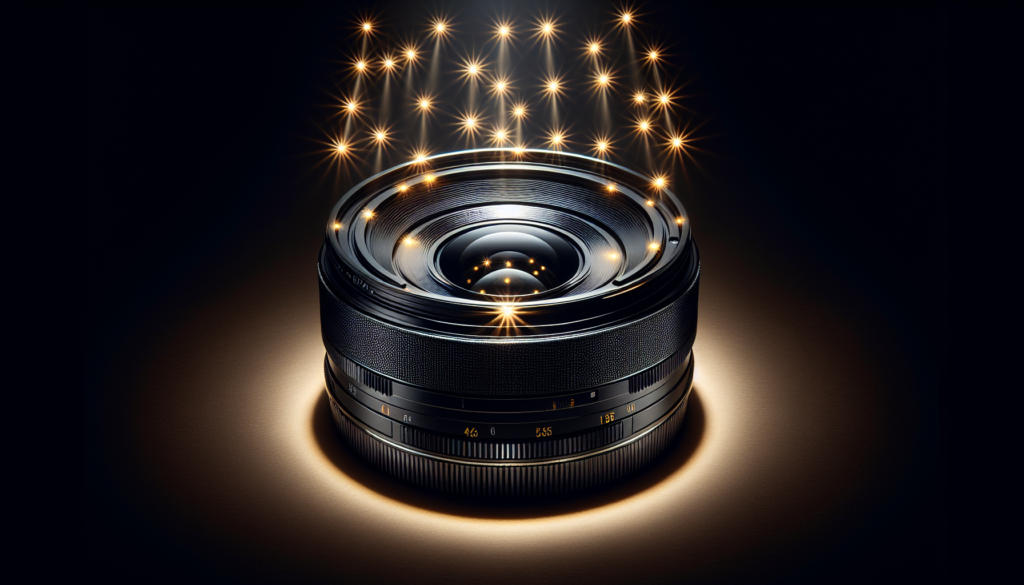
Controlling Shadows and Highlights
Controlling shadows and highlights is an essential skill for photographers to create balanced and well-exposed images. Shadows and highlights can add depth, dimension, and visual interest to photographs. Here are some techniques for controlling shadows and highlights:
Shadow Placement
Shadow placement refers to where shadows fall in an image. By adjusting the position of the light source, photographers can control the placement of shadows and how they interact with the subject. Shadows can be placed strategically to create interesting patterns, separate the subject from the background, or add depth and dimension.
Shadow Softness
The softness or hardness of shadows depends on the size and proximity of the light source. Larger light sources produce softer shadows with gradual transitions between light and dark areas. Smaller light sources create harsher shadows with sharper transitions. By using diffusers or bouncing light off reflectors, photographers can soften the shadows and create a more flattering and even illumination.
Highlight Placement
Highlight placement refers to where the brightest areas of light fall in an image. These highlights can define the shape and contours of the subject, drawing attention to specific elements. By adjusting the position of the light source, photographers can control the placement of highlights and create emphasis or add visual interest to the image.
Highlight Intensity
The intensity of highlights can be adjusted by controlling the power output of the light source or using reflectors to bounce light back onto the subject. Dimming the light source results in softer and more subtle highlights, while increasing the power intensity creates more pronounced and intense highlights. Controlling the highlight intensity allows photographers to add emphasis or create a specific mood in their images.
Fill Light
Fill light is a secondary light source that is used to fill in shadows created by the main light source. It helps reduce the overall contrast in the image and provides more detail in the shadow areas. Fill light can be achieved by using reflectors, diffused light sources, or lower-powered lights. Adjusting the intensity of the fill light allows photographers to control the amount of detail and balance between shadows and highlights.
High Dynamic Range
High dynamic range (HDR) is a technique that involves capturing multiple exposures of the same scene and merging them to create an image with a wider range of tones. This technique is particularly useful when photographing scenes with extreme contrasts between highlights and shadows. HDR imaging allows photographers to capture more detail in both the shadow and highlight areas, resulting in a more balanced and well-exposed image.
Using the In-Camera Light Meter
Understanding and utilizing the in-camera light meter is essential for achieving accurate exposure in your photographs. The light meter measures the brightness of a scene and provides an indication of the proper exposure settings. Different light metering modes in cameras allow photographers to control the metering area and choose the appropriate exposure settings. Here are some commonly used light metering modes:
Understanding Exposure Metering
Exposure metering refers to the process of measuring the amount of light in a scene and determining the appropriate camera settings to achieve a well-exposed image. The camera’s built-in light meter measures the reflected light from the scene and calculates the exposure based on the selected metering mode.
Evaluative Metering
Evaluative metering, also known as matrix or multi-zone metering, calculates the exposure by considering multiple areas of the frame. The camera analyzes various elements such as color, brightness, and patterns to determine the exposure settings. Evaluative metering is useful for achieving balanced exposures in complex lighting situations or scenes with high contrast.
Center-Weighted Metering
Center-weighted metering gives priority to the central portion of the frame when calculating the exposure. The camera places more emphasis on the light readings from the center and gradually considers the surrounding areas. Center-weighted metering is useful when the subject is centrally positioned and evenly illuminated, as it provides accurate exposures based on the subject’s brightness.
Spot Metering
Spot metering measures the exposure from a very small, specific area of the frame, usually at the center of the viewfinder. It allows photographers to pinpoint the exposure for a particular subject or area, irrespective of the surrounding elements. Spot metering is especially useful in challenging lighting conditions or when the subject is backlit or in shadows.
Using Exposure Compensation
Exposure compensation allows photographers to adjust the exposure settings calculated by the camera’s light meter. It is particularly useful in situations where the overall scene brightness or contrast may fool the camera’s metering system, resulting in underexposed or overexposed images. By dialing in positive or negative exposure compensation, photographers can fine-tune the exposure settings to achieve the desired result.

Mastering Lighting Setup and Techniques
Mastering lighting setup and techniques is crucial for achieving professional and compelling results in photography. Here are essential lighting setups and techniques to consider:
Key Light
The key light is the main light source that provides the primary illumination on the subject. It sets the overall lighting scheme and affects the mood, shape, and texture of the image. The key light is typically the brightest light in the setup and is positioned at a specific angle and distance from the subject to create the desired lighting effect.
Fill Light
The fill light is a secondary light source used to fill in shadows created by the key light. It helps reduce contrast and provides more detail in the shadow areas. The intensity of the fill light should be lower than the key light to maintain a natural and pleasing balance between light and shadow. The position and angle of the fill light depend on the desired lighting effect and the subject’s characteristics.
Accent Light
Accent lights, also known as rim lights or hair lights, are positioned behind the subject to separate it from the background and create highlights around the edges. Accent lights add depth and visual interest to the image. They can be used to highlight specific features or create a sense of dimension. The intensity and positioning of the accent lights can be adjusted to achieve the desired effect.
Background Light
Background lights are used to illuminate the background or create separation between the subject and the background. They provide depth and dimension to the image by adding highlights or interesting lighting patterns. The position and intensity of the background light can be adjusted to create different lighting effects or to complement the overall lighting setup.
Controlling Light Ratios
Light ratios refer to the relationship between the brightness of the key light and the fill light. By adjusting the intensity of each light source, photographers can control the contrast and overall mood of the image. A high light ratio, with a brighter key light and a dimmer fill light, creates a more dramatic and contrasty look. A low light ratio, with a more balanced intensity between the key light and fill light, produces a softer and more even illumination.
Hard vs. Soft Light
Hard light refers to light that comes from a small light source or a light source positioned far away from the subject. It creates well-defined and sharp-edged shadows and emphasizes textures and details. Soft light, on the other hand, comes from a large light source or a light modifier that diffuses the light. It creates soft and diffused shadows with a gradual transition between light and dark areas, resulting in a more flattering and even illumination.
Direct vs. Indirect Light
Direct light refers to light that falls directly on the subject without bouncing off any surfaces. It provides strong and directional illumination, creating well-defined shadows and highlights. Indirect light, on the other hand, is light that is bounced or diffused before reaching the subject. It produces a more diffused and flattering illumination, minimizing harsh shadows and creating a softer look.
Lighting for Different Genres of Photography
Different genres of photography require different lighting techniques to create the desired mood, atmosphere, and visual impact. For example, portrait photography often utilizes soft and flattering lighting setups to enhance the model’s features and expressions. Fashion photography often employs dramatic and high-contrast lighting to convey a sense of style and elegance. Landscape photography relies on natural lighting and the play of light and shadow to enhance the natural beauty of the scene.
Studio Lighting vs. On-Location Lighting
Studio lighting refers to lighting setups that are created in a controlled studio environment. Photographers have full control over the positioning and intensity of the lights, as well as access to various light modifiers and equipment. On-location lighting, on the other hand, refers to lighting setups used in outdoor or on-location shoots. Photographers often have to adapt to the available natural light or use portable lighting equipment to achieve the desired lighting effect. Both studio lighting and on-location lighting offer unique advantages and challenges, and photographers should be familiar with both approaches.
Balancing Ambient Light
Ambient light refers to the existing or available light in a scene, such as sunlight or artificial lights. To create a balanced exposure, photographers often need to balance the intensity and color temperature of the artificial light with the ambient light. This can be achieved by adjusting the power output of the light source, using gels to match the color temperature, or modifying the light to blend seamlessly with the ambient light.
Avoiding Glare and Reflections
Glare and reflections are common challenges when working with artificial lighting. They can result in unwanted hotspots, shiny or reflective surfaces, or distracting highlights. To avoid or minimize glare and reflections, photographers can use matte finishes or diffusion materials on surfaces, adjust the angle or position of the lights, or use flags or barn doors to control the light spill.
Advanced Lighting Techniques
Once you have a solid understanding of the basics of lighting, you can explore advanced lighting techniques to further enhance your creativity and push the boundaries of your photography. Here are some advanced lighting techniques to consider:
High-Speed Sync
High-speed sync (HSS) allows photographers to use a flash at shutter speeds faster than the camera’s sync speed. It enables freezing fast-moving subjects or using larger apertures in bright ambient light. HSS is particularly useful in outdoor or action photography, where the available light may exceed the sync speed limitations of the camera.
Stroboscopic Flash
Stroboscopic flash involves using multiple rapid bursts of light during a single exposure. It can freeze motion and capture multiple instances of movement in a single image. Stroboscopic flash is often used in sports photography or creative photography to create dynamic and eye-catching images.
Light Painting
Light painting is a technique that involves using long exposure and manipulating a light source to paint or draw shapes, patterns, or text in the frame. This technique allows photographers to create unique and abstract images with trails of light. Light painting is often used in night photography or creative photography to add a fantastical and whimsical element to the image.
Multiplying Lights
Multiplying lights involves using multiple light sources to create complex lighting setups or replicate natural lighting conditions. By strategically positioning and adjusting multiple lights, photographers can create unique and dynamic lighting effects. Multiplying lights can add depth, texture, and visual interest to a photograph.
Creating Bokeh
Bokeh refers to the aesthetic quality of the out-of-focus areas in an image. By using a wide aperture and positioning the lights or background elements appropriately, photographers can create bokeh that enhances the overall visual impact of the image. Bokeh adds a dreamy and ethereal quality to the photograph and can be used creatively to highlight the subject or create a sense of depth.
Lighting for Product Photography
Product photography requires careful attention to detail and lighting techniques to highlight the features and qualities of the product. Reflectors, diffusers, or light tents can be used to achieve even and diffused lighting, minimizing harsh shadows or distracting reflections. The choice of lighting setup and light modifiers depends on the specific product and desired effect.
Creative Lighting for Portraits
Creative lighting for portraits involves pushing the boundaries of traditional lighting setups to create visually striking and unique images. This can include using unconventional light sources, experimenting with different light modifiers, or playing with shadows and highlights. Creative lighting techniques can add drama, mystery, or a sense of whimsy to portrait photographs.
Creating Silhouettes
Silhouettes are images where the subject appears as a dark outline against a bright background. To create silhouettes, photographers need to expose for the background or ambient light while underexposing the subject. Silhouettes can be achieved by positioning the subject against a bright light source or backlighting the subject. They can create a sense of mystery, intrigue, or simplicity in the image.
Using Light for Texture
Light can enhance the texture and details of a subject, adding depth and visual interest to the image. By positioning the light source at different angles, photographers can reveal the texture and three-dimensionality of the subject. Texture can be emphasized or minimized depending on the desired effect, adding a tactile and dynamic quality to the photograph.
Understanding and mastering the various lighting techniques and setups, as well as experimenting with different lighting modifiers and creative approaches, will enable you to achieve stunning and captivating images. Remember, lighting is a powerful tool in photography that allows you to shape your vision and convey your artistic expression. With practice and creativity, you can create images that showcase your unique perspective and style.
